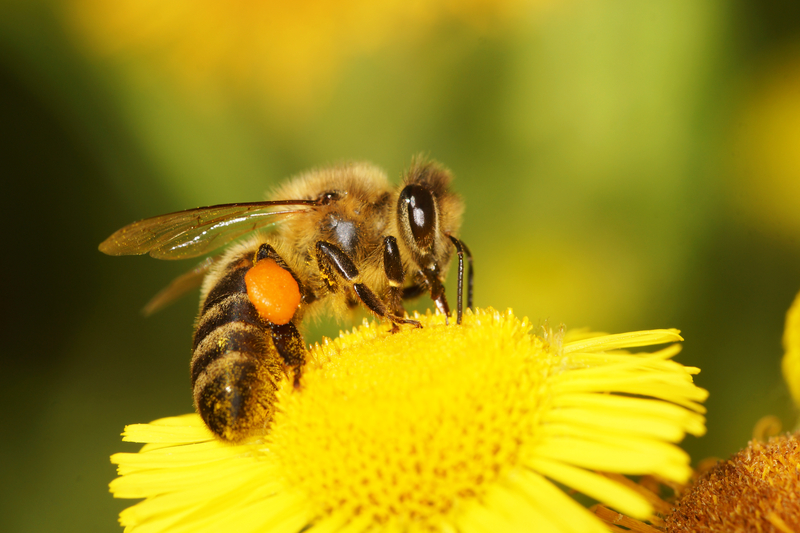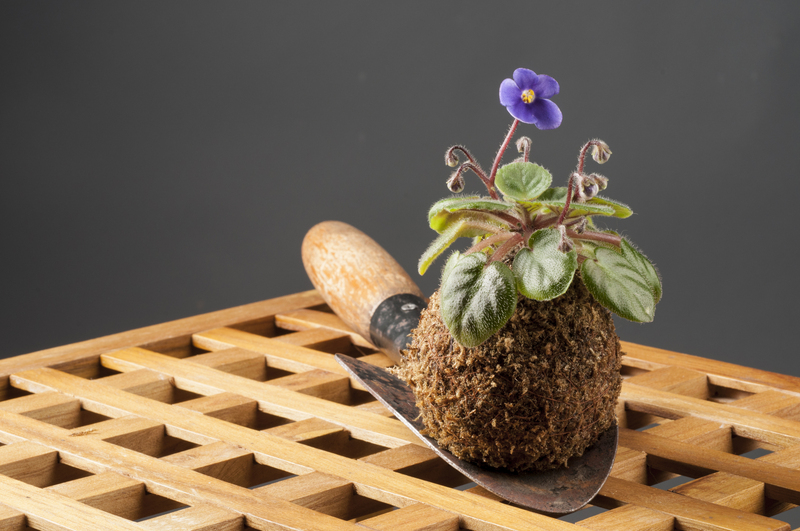Let Your Garden Bloom as a Kid-Approved Exploration Zone
Posted on 15/09/2025
Let Your Garden Bloom as a Kid-Approved Exploration Zone: A Comprehensive Guide
Transforming your outdoor space into a thriving garden is a rewarding endeavor. But if you want to spark curiosity, joy, and learning for kids, it's time to let your garden bloom as a kid-approved exploration zone. Imagine a backyard where children can dig, discover, and delight in the wonders of nature. Whether you have a sprawling lawn or a pocket-sized patch, you can create a magical, educational, and safe environment that inspires little explorers every day.

Why Create a Kid-Friendly Exploration Garden?
Encouraging outdoor exploration for children isn't just about fun--it's essential for healthy development. When your garden is a kid-approved exploration zone, kids:
- Build confidence through hands-on experiences
- Develop motor skills by climbing, digging, and planting
- Learn about science, math, and nature in a real-world context
- Foster creativity and problem-solving skills
- Practice mindfulness and relieve stress
- Bond with family and friends in an engaging setting
Let's explore how you can let your garden bloom as a kid-approved playground and classroom that delights and educates every day.
Designing Your Garden as a Kid-Approved Exploration Zone
1. Safety First: kid-Approved Means Kid-Safe
Before introducing any features, start with safety:
- Eliminate hazardous plants (e.g., foxglove, oleander) and replace them with safe, non-toxic varieties
- Enclose ponds or water features and cover sharp edges
- Provide shaded areas to protect against strong sun
- Use natural mulch or grass instead of hard surfaces
Safety forms the foundation of a kid-approved exploration garden, ensuring that adventurers can learn and play without risk.
2. Zone Your Garden for Diverse Exploration
Transforming your garden into a kid-friendly exploration zone means creating various pockets of discovery:
- Digging zone: Set up a dedicated patch with shovels and safe tools
- Garden beds: Low, reachable raised beds for little gardeners
- Wildlife stations: Bird feeders, bug hotels, and butterfly gardens
- Sensory corners: Areas with fragrant herbs, textured plants, and water features
- Imaginative play spaces: Teepees, fairy gardens, or hidden paths
Every area invites discovery and keeps kids engaged for hours.
3. Choose Kid-Approved Plants for Exploration
Plant selection is crucial in a child-friendly exploration garden. Here are favorites that captivate senses and curiosity:
- Sunflowers: Towering, fast-growing, and striking
- Sensory herbs: Lamb's ear (soft touch), mint (smell), basil (taste)
- Berries: Strawberries, raspberries--edible and fun to pick
- Pumpkins or squash: Amazing for growth and harvest activities
- Snapdragons and nasturtiums: Vibrant colors, safe to touch, and even nibble!
Let your garden bloom as a child-approved wonderland with plants that delight all ages.
4. Encourage Wildlife and Natural Discovery
Children are awestruck by living creatures. Encourage this by:
- Installing birdhouses and bee hotels
- Leaving a wild corner to attract butterflies, ladybugs, and frogs
- Adding a mini pond (secure and shallow) for observing insects and tadpoles
*Observation notebooks and magnifying glasses can make your exploration garden feel like a scientist's field lab!*
Top Activities for a Kid-Approved Exploration Zone
1. Gardening Adventures: Plant, Water, Watch
Give children their own patch or pots to manage--from sowing seeds to watering and harvesting. The act of nurturing something living teaches responsibility and patience.
- Let them choose fast-growing seeds for quick rewards
- Track plant growth in a garden journal
- Celebrate first blooms or harvests with a mini party
2. Sensory Play Stations
Stimulate the senses with unique experiences:
- Touch: Soft moss, crunchy bark, smooth pebbles
- Scent: Crushed herbs, fragrant flowers
- Sound: Wind chimes, rustling grasses, water trickling
- Sight: Colorful blooms, patterned leaves, insect activity
- Taste: Edible flowers, veggies, and fruits (always double-check safety)
3. Wildlife Watching and DIY Nature Crafts
Transform your child-friendly garden into a wildlife haven:
- Make pinecone bird feeders or bug hotels
- Use fallen petals, leaves, and twigs for nature art projects
- Organize a wildlife scavenger hunt: Who can find a butterfly, worm, or ladybug first?
4. Storytelling and Imagination Spaces
Install a reading nook, build a fort from natural materials, or create fairy trails with found objects. Storytelling encourages language development and emotional expression.
Creative Tips to Let Your Garden Bloom as Kid-Approved
Use Recycled and Everyday Materials
- Create planters from old boots, teapots, or milk cartons
- Use painted rocks as plant markers
- Craft wind spinners or mobiles with bottle caps and string
Upcycling teaches environmental responsibility while adding bursts of color and whimsy.
Get Kids Involved in Every Step
- Planning: Let them help sketch garden layouts or choose seeds
- Planting: Get hands dirty together--make it a family ritual
- Decorating: Encourage DIY art to personalize garden corners
- Observing: Keep a shared photo diary or blog about garden changes
Engaging children ensures that the space feels truly theirs, boosting pride and connection.
Seasonal Activities for Year-Round Interest
- Spring: Seed starting, flower picking, and bug hunts
- Summer: Watering relay races, garden picnics, sunflower-height contests
- Fall: Leaf collecting, seed saving, pumpkin carving
- Winter: Birdwatching, garden plan crafting, mini-greenhouse experiments
Each season brings new discoveries to your kid-approved exploration zone!
Fostering Learning in Your Kid-Friendly Exploration Garden
When you let your garden bloom as a kid-focused learning zone, every activity becomes an educational opportunity:
- Experiment: Test which plants grow best in sun or shade
- Observe: Record changes--growth, colors, visiting wildlife
- Hypothesize: Why do some plants wilt? How do bees help flowers?
- Share discoveries: Host a "garden show-and-tell" with friends or family
Through observation and hands-on activities, your garden is transformed into the ultimate outdoor classroom.
Encouraging Responsibility and Empathy
Tending to living things instills care and empathy. Encourage your child to:
- Water regularly and notice when plants are thirsty
- Feed birds or leave out treats for helpful insects
- Protect plants from rough play or trampling
Children learn that their actions directly shape the garden's well-being.
Gardening and Emotional Health
Green spaces are proven to reduce anxiety and boost mood. Children benefit from:
- Quiet reflection in a leafy corner
- Writing or drawing in a nature journal
- Celebrating successes, like the first bloom or butterfly visit
Letting your garden bloom as a kid-centered exploration area helps foster resilience and emotional balance.

Getting Started: A Step-By-Step Guide
- Assess your space: Note sunlight, soil, and existing features.
- Clear hazards: Remove toxic plants and ensure security.
- Sketch zones: Design areas for digging, planting, play, and rest.
- Select kid-friendly plants and materials.
- Add interactive elements: Think bug hotels, stepping stones, and secret trails.
- Invite kids to help build and decorate.
- Plan engaging activities for each visit.
The more invested your child feels, the more rewarding and magical your garden becomes.
Frequently Asked Questions (FAQs): Let Your Garden Bloom as a Kid-Approved Exploration Zone
What are the best tools for children to garden safely?
- Child-sized trowels and rakes
- Gardening gloves to protect little hands
- Watering cans with manageable handles
Look for tools labeled for children or made of durable plastic with no sharp edges.
How can I encourage reluctant kids to explore the garden?
- Start with sensory activities like mud play or leaf rubbings
- Involve favorite stories--grow a "Peter Rabbit" plot or "Jack and the Beanstalk" beans
- Set up friendly competitions or exploration challenges
What if I have a tiny yard or no yard?
- Container gardening is perfect for patios or balconies
- Windowsills can hold herb pots and small flowers
- Explore nearby parks or community gardens for regular outdoor adventures
Let Your Garden Bloom as a Kid-Approved Exploration Zone: The Joy Awaits
When you let your garden bloom as a kid-approved exploration zone, you create a haven that combines nature, learning, and joy. The benefits echo far beyond fresh air and dirty hands: you nurture curiosity, creativity, and family bonds in your own backyard. Whether growing wildflowers or building bug hotels, every day brings new discoveries and cherished memories.
Ready to start your journey? Roll up your sleeves, invite little helpers, and turn your outdoor space into an adventure-filled classroom--a place where imaginations soar and nature's wonders are always within reach. Let your garden bloom, and let your children grow along with it!

